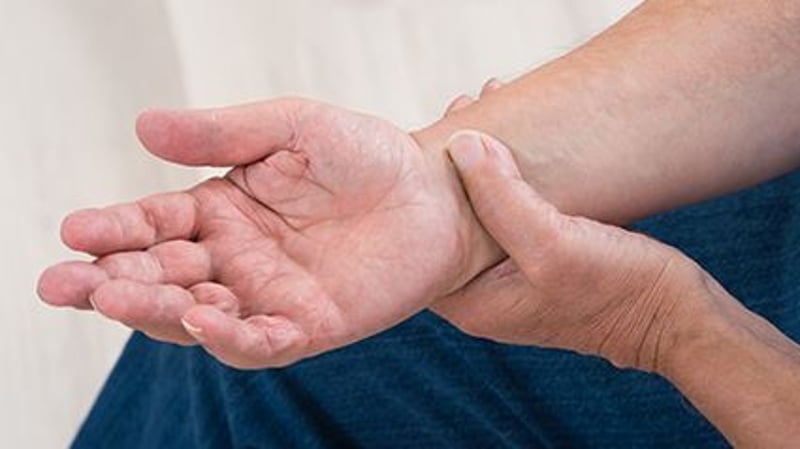Due to a recent change of our website, the process for submitting refill requests online has now changed.
Please click on “Sign Up Today!†to create a new account, and be sure to download our NEW Mobile app!
Thank you for your patience during this transition
Get Healthy!

- Cara Murez
- Posted October 24, 2022
Permanently Bent 'Trigger Finger' Can Be Hallmark of Diabetes
A finger that "locks"can be a telltale sign of another condition: Diabetes.
Researchers suspected that this trigger finger, often in the ring finger or thumb, might indicate diabetes after frequently finding the condition in patients who had or developed diabetes. It's characterized by thickening of tendons that are used to bend the finger and their connective tissue sheath.
"At the hand surgery clinic, we have noted for a long time that people with diabetes, both type 1 and type 2, are more often affected by trigger finger," said researcher Mattias Rydberg, a doctoral student at Lund University and resident physician at Skåne University Hospital, both in Lund, Sweden. "Over 20% of those who require surgery for this condition are patients who have, or will develop, diabetes."
A painful condition, this thickening causes the finger to become fixed in a bent position toward the palm. It can often be treated with cortisone injections, but sometimes requires surgery.
In the new study, researchers examined two Swedish health databases, including the national diabetes registry, to study whether high blood sugar increased the risk of trigger finger.
In all, between 1% and 1.5% of the population is affected by trigger finger, the study found. In people with diabetes, the rate was 10% to 15%. Trigger finger was especially notable in people with type 1 diabetes.
High blood sugar was linked to an increased risk of trigger finger in both men and women with type 1 and type 2 diabetes, according to the report. However, the study could not prove a cause-and-effect relationship.
Blood sugar is measured in HbA1C, or long-term blood glucose. Men with the worst blood sugar levels had a risk for trigger finger up to five times higher compared to men with a well-regulated HbA1C level, the study found.
"However, we can't know for certain if any of the groups seek health care more often than others which could be a factor that affects the results,"Rydberg said.
Why diabetes might create this increased risk isn't known. A theory is that high blood sugar thickens both the flexor tendons and their connective tissue sheaths, causing them to lock more easily. People with unregulated blood sugar are more prone to nerve entrapments in the hand.
Lars Dahlin, a professor at Lund University and consultant in hand surgery at Skåne University Hospital, said, "It is important to draw attention to the complications from diabetes and how they can arise in order to discover them early, which enables faster treatment and thus a better outcome."
Dahlin added that, "in addition to nerve compressions and trigger finger, there may also be a link with thickening of the connective tissue in the palm (Dupuytren's contracture), impairment of joint movement and the risk of arthritis at the base of the thumb."
He said the mechanisms behind these complications probably differ in the case of diabetics.
"The results of this study are interesting, as we can show that blood sugar dysregulation has a connection with the development of trigger finger,"Dahlin said in a university news release.
The researchers now aim to learn how effective it is to operate on patients with diabetes who are affected by trigger finger.
Rydberg said, "From our experience at the clinic, surgery goes well and there are few complications, but it takes a little longer for patients with type 1 and type 2 diabetes to regain full movement and function."
He said it would also be interesting to study whether trigger finger could be a warning signal for type 2 diabetes.
The findings were recently published in Diabetes Care.
More information
The U.S. National Library of Medicine has more on trigger finger.
SOURCE: Lund University, news release, Oct. 19, 2022
